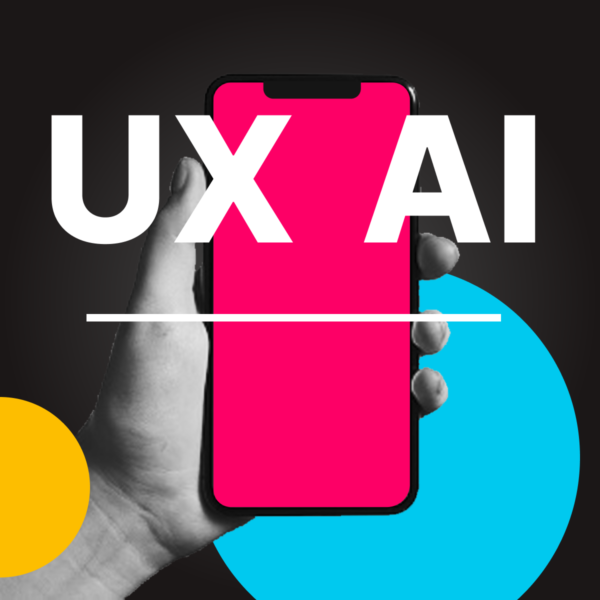The talk of the hour on AI has got us all busy discussing its life changing possibilities, pros and cons and the effects of its ever-evolving nature. And now is the time to reflect on how the growth in these technologies are going to impact the industries globally. The field of User Experience (UX) design is no such exception, where with the capabilities of AI has got all the designers questioning their future in the career. But to the extent of its benefits ,that is, its ability to analyze vast amounts of data, learn from user behavior, and make intelligent predictions, AI is transforming the way we approach UX design. Let’s discuss what we have in our mind on how game changing is AI going to be for us designers in this field!
1. Personalized Experiences
AI would enable UX designers to create highly personalized experiences tailored to individual users. By leveraging machine learning algorithms, AI systems can analyze user data, preferences, and behavior patterns to deliver customized content, recommendations, and interactions. This level of personalization enhances user engagement, satisfaction, and ultimately, the overall user experience.
2. Intelligent Chatbots and Virtual Assistants
Chatbots and virtual assistants powered by AI are becoming increasingly sophisticated. They can engage in natural language conversations, understand user intents, and provide real-time assistance. These intelligent assistants can offer personalized recommendations, answer user queries, and guide users through complex processes, making interactions with digital products and services more intuitive and efficient.

Photo credit – kustomer.com
3. Predictive Analytics
AI-driven predictive analytics can anticipate user needs and behaviors based on historical data. UX designers can leverage this capability to create proactive experiences that anticipate user actions and provide relevant information or suggestions in advance. For example, an e-commerce platform can use predictive analytics to recommend products based on a user’s browsing history and preferences, enhancing the user’s journey and increasing conversion rates.
4. Emotion and Sentiment Analysis
AI algorithms can analyze facial expressions, voice tone, and other indicators to gauge user emotions and sentiments. This capability allows UX designers to design experiences that respond and adapt to users’ emotional states. For instance, an AI-powered app can detect a user’s frustration and provide appropriate support or offer calming techniques. By understanding and addressing user emotions, AI enhances empathy and creates more meaningful and empathetic user experiences.
5. Automated Design Processes
AI can automate repetitive and time-consuming design tasks, enabling UX designers to focus on higher-level creative and strategic aspects. For example, AI-powered tools can generate design variations, create responsive layouts, or suggest color palettes based on user preferences and design principles. This automation streamlines the design process, increases productivity, and allows designers to iterate and experiment more efficiently.
6. Accessibility and Inclusive Design
AI can play a vital role in making digital products and services more accessible and inclusive. By leveraging AI algorithms, UX designers can automatically generate alternative text for images, provide real-time captioning or sign language interpretation for videos, and optimize interfaces for individuals with specific disabilities. AI-driven accessibility solutions enhance usability for all users and ensure inclusivity in design.
7. Continuous Learning and Improvement
AI systems can continuously learn from user interactions, feedback, and data to improve the user experience over time. They can adapt to changing user needs, preferences, and emerging trends, allowing UX designers to iterate and optimize designs based on real-time insights. This iterative approach ensures that digital products and services remain relevant, engaging, and effective in meeting user expectations.

Photo credit – Click here
In conclusion
In summary, the integration of AI into UX design has the potential to revolutionize the industry, transforming it into a harmonious partnership between human creativity and AI efficiency. As AI technology continues to advance, the collaboration between AI and UX design will undoubtedly shape the future of user experiences, making them more intuitive, engaging, and meaningful than ever before. AI has the capability to become the ultimate design assistant, elevating the efficiency and personalization of the UX design process to unprecedented levels. As AI continues to advance and become more sophisticated, the collaboration between AI and UX designers opens the door to a new era of design.
Rather than replacing designers, AI serves as a catalyst for transformation and collaboration. Designers will evolve from being solely creators to becoming guides, supervisors, and enhancers of the creative process that AI empowers. This fusion of human creativity and AI capabilities will result in more personalized, intuitive, and engaging experiences for users.
The future of UX design is an intriguing intersection of human ingenuity and artificial intelligence. It is a story of transformation and collaboration, where AI enhances and augments the design process rather than replacing it. Ultimately, the true beneficiaries of this symbiotic relationship are the users, who will enjoy a new level of personalized, intuitive, and captivating experiences like never before.

Leave a Reply